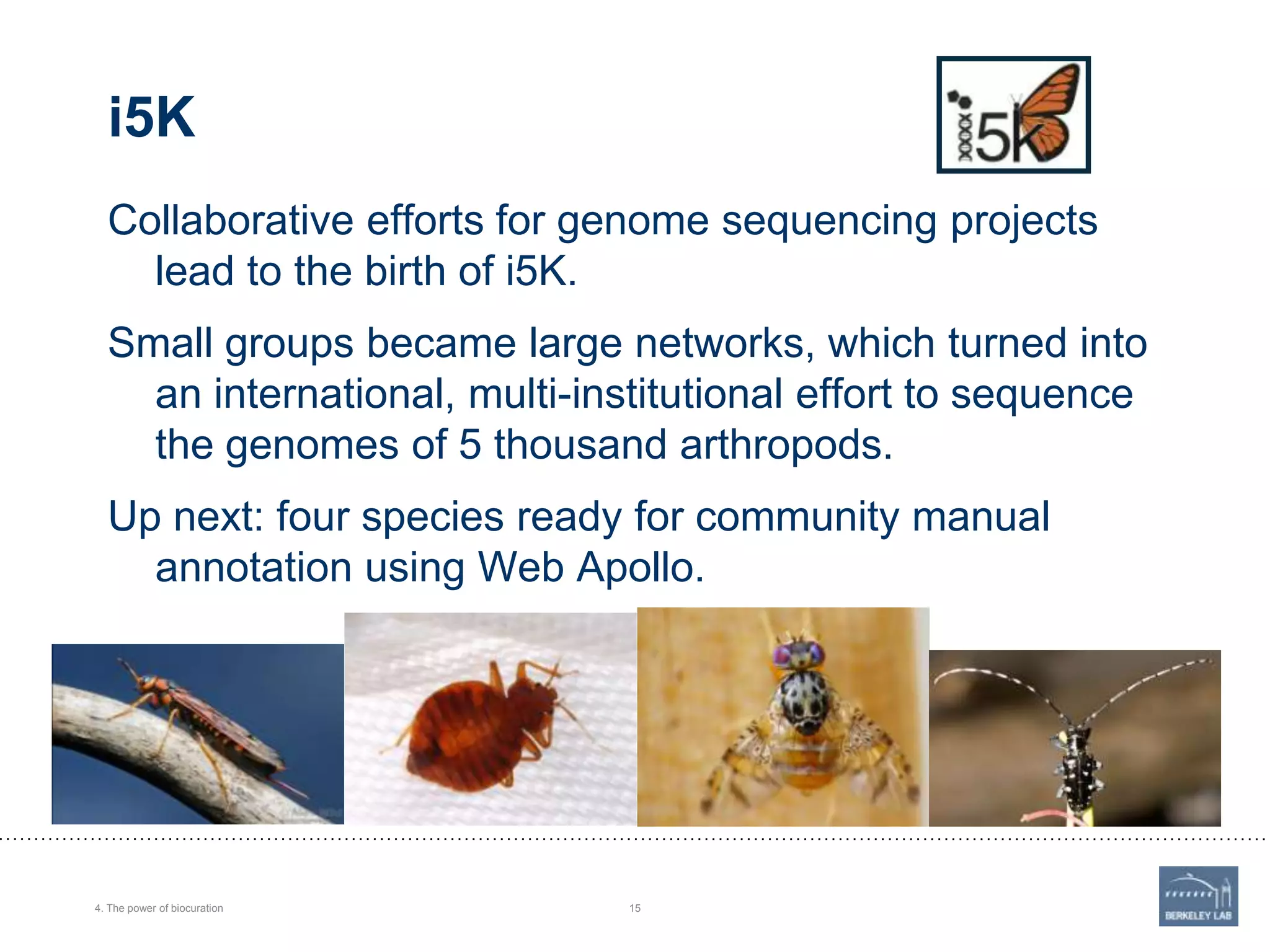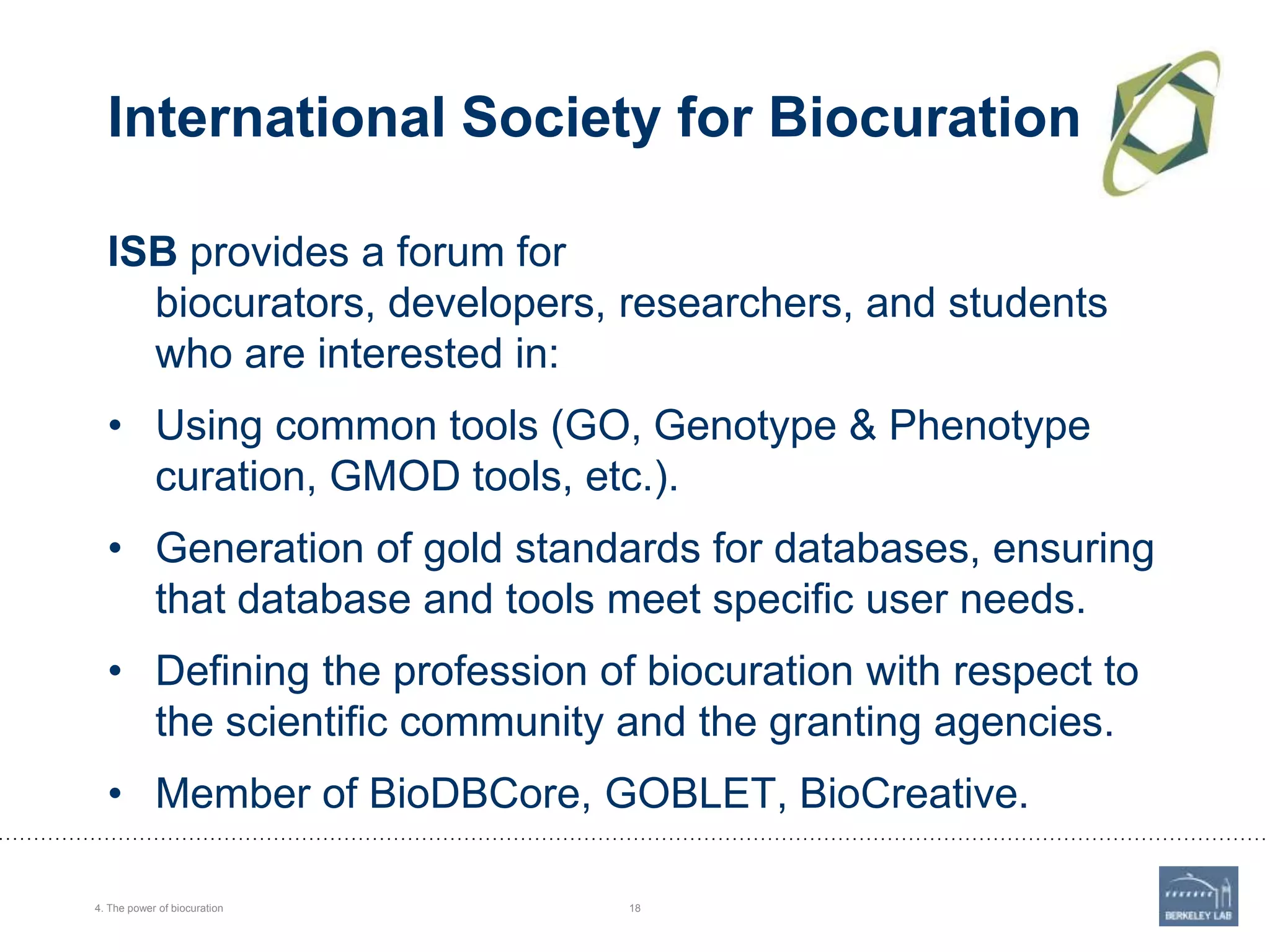The document discusses Web Apollo, a web-based genomic annotation editing platform that facilitates community-based curation of biological data. It highlights the collaborative efforts of over 80 institutions and hundreds of scientists in manual gene annotation, sharing lessons learned from these efforts, such as the importance of periodic updates and the need for flexibility in response to new data. The project demonstrates how community engagement can improve the quality and effectiveness of genomic research.



















